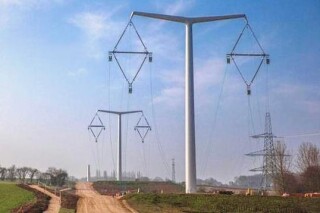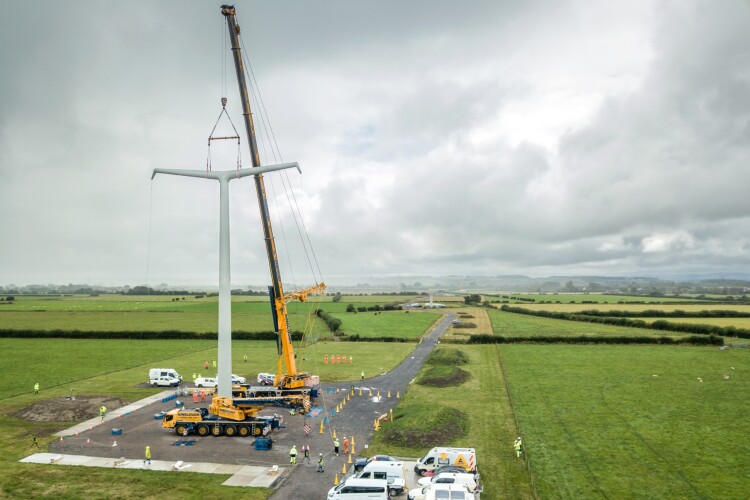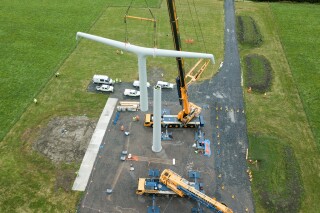The new-style pylon is being used to connect Hinkley Point C Nuclear power station to the grid.
The T-pylons have a single pole and T-shaped cross arms which hold the wires in a diamond ‘earring’ shape. They are 35 metres high, a third shorter than National Grid’s traditional lattice pylons, and have a smaller footprint using less land.
There will be 116 of these T-pylons along a 57km route for Hinkley Point C.
The new pylons form part of National Grid’s Hinkley Connection project, a £900m investment to connect low carbon electricity from Hinkley Point C Nuclear power station. They will run between Bridgwater and Portbury, other than through the Mendip Hills AONB where the new connection goes underground. The project also includes the removal of 249 electricity pylons between Bridgwater and Avonmouth.
Balfour Beatty won a £214m contract in January 2019 to deliver the work.

The new pylon design, by the Danish architects and engineers Bystrup, was selected from more than 250 designs entered into an international competition run in 2011, organised by the Royal Institute of British Architects and government (the then Department of Energy & Climate Change). The competition sought a new design to reduce impact on the local environment and surroundings.
Construction of the first 48 T-pylons by Balfour Beatty on behalf of National Grid began last week near East Huntspill, with each pylon taking roughly five days to build. Construction of the remaining 68 pylons, north of Sandford, will begin in 2022.

The body of the T-pylons are made in China, while the diamond-shaped structures are made in the UK, by Allied Insulators in Stoke-on-Trent.
Chris Bennett, acting president of National Grid Electricity Transmission, said: “We are always looking for innovative new ways to mitigate the impact of our infrastructure on the natural environment and projects such as T pylons are a great example.
This new design forms part of our significant investment in the network in England and Wales, adding capacity onto the grid to deliver increasing amounts of low carbon energy and support the UK’s drive towards its net zero target."
There are no plans to use the T pylons anywhere else, however. National Grid said that they were merely ‘part of a suite of technologies’ to mitigate the impact of electricity infrastructure, including alternative lattice pylon designs and different types of underground and subsea cable systems. “The appropriate approach for each new development or upgrade is assessed on a case-by-case basis, with each technology used based where it is operationally possible and cost efficient for electricity consumers,” it said.
They were chosen for the Hinkley Connection Project because, during consultation, local people showed a preference for them over lattice pylons.
The old lattice design, by US engineering company Milliken Brothers, has been around since 1927 when it won a competition run by the Central Electricity Generating Board. There are around 22,000 pylons stretching over more than 4,300 miles of high-voltage overhead lines in England and Wales.

Got a story? Email news@theconstructionindex.co.uk
.png)



